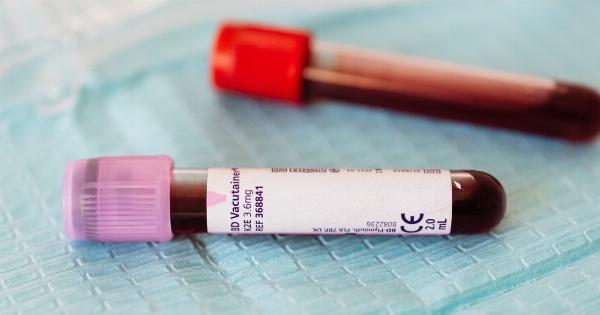Gut inflammation can be caused by various factors such as stress, infections and diets. It can lead to various health issues such as Irritable Bowel Syndrome (IBS), Inflammatory Bowel Disease (IBD) and many others.
Detecting gut inflammation early can help in preventing its progression and keeping the gut healthy. Here are 10 ways to detect gut inflammation.
1. Stool test
A stool test is one of the simplest and most common ways to detect gut inflammation. The test involves analyzing the stool sample for the presence of pathogens, white blood cells, and any other abnormalities in the digestive system.
This test can detect the presence of bacteria or other parasitic microorganisms that can cause inflammation in the gut. It can also detect any malabsorption issues such as lactose intolerance.
2. Endoscopy
Endoscopy is another way to detect gut inflammation. This test involves inserting a long, thin tube into the digestive tract to examine the lining of the gut.
During this procedure, the doctor may take a biopsy of the tissue lining of the gut to look for signs of inflammation. Endoscopy can also help in diagnosing other gastrointestinal problems.
3. Blood test
A complete blood count (CBC) can also detect gut inflammation. The test measures the number of white blood cells, red blood cells, and platelets in the blood. An increase in the number of white blood cells can indicate inflammation in the gut.
A blood test can also help in identifying any other underlying health issues.
4. Imaging tests
Imaging tests such as MRI and CT scans can also detect gut inflammation. These tests create detailed images of the digestive system, allowing doctors to identify any abnormalities in the gut.
Imaging tests can also help in diagnosing other gastrointestinal problems that may cause inflammation.
5. Inflammatory Markers
Inflammatory markers such as C-reactive protein (CRP), erythrocyte sedimentation rate (ESR), and fecal calprotectin levels can also indicate gut inflammation. High levels of these markers in the blood can indicate inflammation in the gut.
These markers can also help identify inflammation in other parts of the body.
6. Food diary
A food diary can help in identifying foods that trigger gut inflammation. Foods that are spicy, acidic or high in fat can cause inflammation in the gut.
A food diary can help in identifying these trigger foods, and avoiding them can help in reducing inflammation in the gut.
7. Symptom tracking
Keeping track of symptoms such as bloating, abdominal pain, and diarrhea can help in detecting gut inflammation.
When patients identify specific symptoms that occur after eating certain foods or during periods of stress, they can make changes to their diet or lifestyle to reduce inflammation in the gut.
8. Genetic testing
Genetic testing can help in identifying individuals who are at higher risk of developing gut inflammation. Individuals with a family history of IBD or other gastrointestinal disorders are more likely to develop gut inflammation.
9. Hormone testing
Hormone imbalances can also contribute to gut inflammation. A hormone test can detect imbalances in hormones such as cortisol, estrogen, and testosterone, which can contribute to inflammation in the gut.
10. Colonoscopy
A colonoscopy is similar to an endoscopy but involves examining the colon rather than the upper intestine. Colonoscopy can help in detecting inflammation in the lower intestine and is very effective in detecting colon cancer.


























